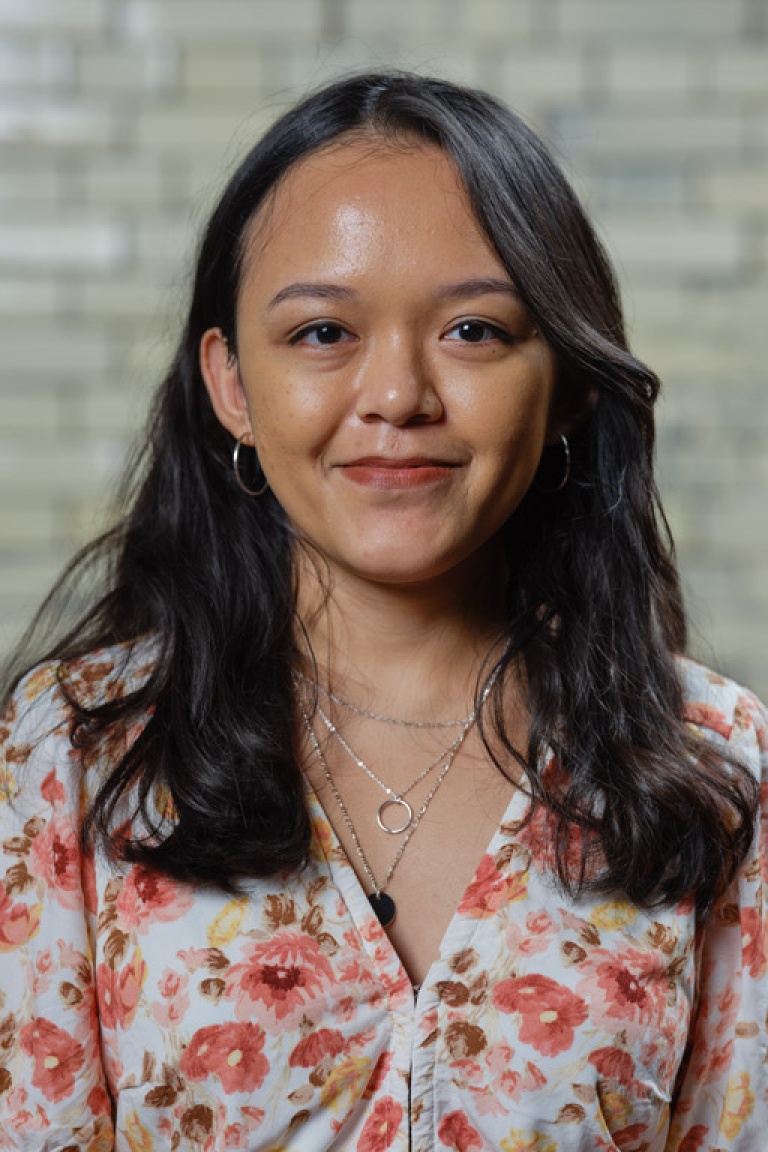There was a time when Gita Nadinda thought that pain simply is what it is. Until she learned about chronic pain and the effect of mindset, and social environment can have on pain. It lead to a master’s programme in Health Psychology in Maastricht, followed by her current PhD within NSMD. Where does she stand, a year after she started?

She describes herself as a problem solver. “I really like challenges and finding solutions. Plus, one of my main motivations is to help improve treatments for people.” Gita Nadinda has been involved in scientific research since her bachelor’s programme at the University of Kansas. Although she’s originally from Indonesia, she lived abroad since she was young. The family moved to Australia for her father’s master’s degree and to the USA for his PhD. “I still feel I’m Indonesian though, and like to talk about where I come from.”
First scientific publication
After her bachelor’s, she did an internship at a non-profit organisation for people with disabilities, and it was there her interest in pain really took root. “I searched for a master’s programme with people who did research on pain, and that’s how I found Madelon Peters and Johan Vlaeyen at Maastricht University.” Her wish to cooperate with them came true. In fact, she just published her first scientific paper ever together with professor Peters, who was her masters’ supervisor. “It is published in Pain, one of the most prestigious journals in this field, so I’ll have to work very hard in the future now I’ve set the standard so high”, she laughs. The article offers a systematic review and a meta-analysis of all the literature so far on the effects of psychological interventions, such as CBT (Cognitive Behaviour Therapy) and ACT (Acceptance Commitment Therapy), to decrease negative outcomes in the post operative setting. You can read the article here.
First PhD experiment
In her PhD project, that she started at Leiden University under supervision of Andrea Evers, Madelon Peters, Johan Vlaeyen and Antoinette van Laarhoven, she focusses on the interplay between expectancies and avoidance in pain, itch and fatigue, in the context of network analysis. To investigate this, she is currently collecting data for her first experiment. “We want to see whether negative expectancies lead to more pain and more avoidance. There are a lot of studies on expectancy and pain and on pain and avoidance, but not combined, so that’s what we’re doing right now. It makes sense that if you expect more pain, you would avoid doing things, so it was surprising that there were not a lot of studies yet that look at the relationship between expectancy and avoidance together.”
Electrically induced pain in the lab
People have to come to the lab for the experiment, where they’re administered individualised electrically induced pain. The question is whether they would want to avoid the pain if they expect to feel more pain. Next to this study, where Nadinda wants to include 116 people in, she’s currently designing an EMA study on people with chronical back pain. EMA stands for Ecological Momentary Assessment: the repeated sampling of a person’s current behaviours and experiences in real time, in their natural environments. “When we get the ethical approval we hope to start the study in the upcoming months. We’ll be asking people five times a day through their smart phones, for fourteen days, about their pain, expectancies, avoidance, fatigue and other psychological factors and we want to analyse this using the network approach.”
Since she started her PhD in times of corona, she wouldn’t know what PhD research ‘normally’ looks like, when you don’t have to disinfect the lab after every participant’s visit, or check their health condition. “This is my normal”, she says. “I think it is a bit harder to recruit research participants because of corona, but I’m still happy with our progress.”